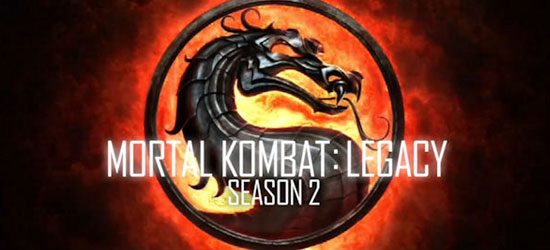
The very first episode of “Mortal Kombat: Legacy” racked up 5.5 million views in a single week and has 70 million to date. Clearly Machinima and Warner Bros. Interactive Entertainment broke barriers in the web series realm with the groundbreaking property and now they’re looking to continue that trend with the show’s second season, “Mortal Kombat Legacy II.”
The first round functioned as a nine-episode prequel to the original game, consisting of origin stories for characters including Jax (Michael Jai White), Shao Kahn (Aleks Paunovic), Cyrax (Shane Warren Jones), and more. “Mortal Kombat: Legacy II,” on the other hand, runs with a linear format and aims to expose the history and rivalries of particular “Mortal Kombat” characters through a narrative that focuses on the tournament as well as interweaving storylines.
With “Mortal Kombat: Legacy II” arriving on Machinima in its entirety on September 26th, series producer Lance Sloane took the time to talk to ShockYa.com about the rise of the web series format, the challenges and decisions that went into making the move from season one to two, the potential for “Legacy III,” the outlook for the impending “Mortal Kombat” feature, and loads more.
Can you tell me about the choice to make a web series to begin with? What are the pros and cons of going with the format nowadays?
Lance Sloane: That’s kind of the area I focus on and that’s our mission to do digital content, so it’s a blessing for us to be able to do a second season of “Mortal Kombat.” And our mandate is to really push the envelope with how we release the digital content, the original content that we’re creating, and then also how we’re capturing it and the talent we’re working with, and that kind of thing.
As a producer, what would you say is the biggest difference between producing something for TV or film compared to making something web-based?
Sloane: For me it’s the speed. Season one, it was literally four months from concept all the way through to delivery to Machinima of the first episode. Where I come from, traditional features, that doesn’t ever happen, ever. And I think it’s kind of been working that way for us on all of the other digital content we’ve created. It’s been extremely fast, the concept phase through to delivery.
Backing up a bit, how about in terms of pitching? This isn’t a particularly common medium just yet, so are you pitching the web series format in addition to your concept?
Sloane: That is a big part of the experiment for us. I think we’re really fortunate where we’ve had content that we’ve had in our pipeline and made the commitment to develop it and make it. And I don’t know, maybe I’m misunderstanding your question because it might be pitching internally to get a green light or producers and other creative talent coming to us and pitching. On that side of things we really haven’t had to take a lot of pitches. We’ve been very lucky on the content that we’ve chosen to move forward with and develop, and the talent that we’re working with to make it.
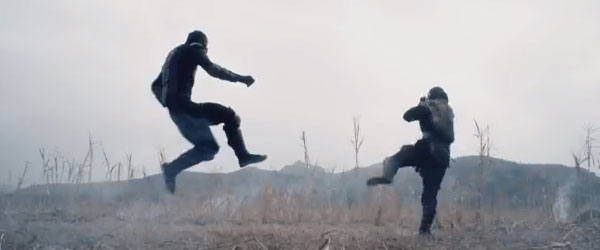
When you’re going out to financers, talent, or anyone else you’re trying to get on board, do you ever find apprehension in regards to the fact that this is a web series and not a movie or TV show?
Sloane: Actually, no. It’s been pretty crazy, the level of talent that wants to work with us and wants to work in the space. I mean, look, we had huge success with the first season of “Mortal Kombat” and that was really one of our first digital original projects in the live-action, action adventure area. For sure, with the success of that and the amount of views that that generated, it got a lot of people interested and wanting to work with us. But to answer your question, it’s not a huge process. Certainly there’s talent that wants to make a feature film or a TV series and they’re not interested in digital, but those are not folks that we’re working with currently. And then the folks that are really kind of looking at features and traditional television, I think they see a way to experiment and try things and incubate things on the digital front.
Can you give me a little more perspective on what makes a web series successful? I’m very familiar with balancing budgets and box office intakes, but what makes “Mortal Kombat” a winner? Ad revenue, views?
Sloane: We’re definitely at a much different price point than a feature or television, and, knock on wood, we’ve been successful in making these and distributing them and the mandate is to continue to do this. We’re trying on all levels to make it work. But it’s different, too. I think when you have a success with the amount of people that see it and see it organically, if that makes sense, to where you’re not taking out billboards or full page print ads or television commercials to make it work, but you’re relying on organic word-of-mouth and I think that’s one of the most fascinating parts about it.
So is there any marketing effort involved?
Sloane: That’s something you should talk to Machinima and YouTube about. Both are masters of marketing to the core audience and doing collaborations with other channels, maximizing the talent they have under their umbrella and the teams that they’re working with. They’re incredibly great at that and that’s one of the things that’s most exciting about partnering with somebody like Machinima.
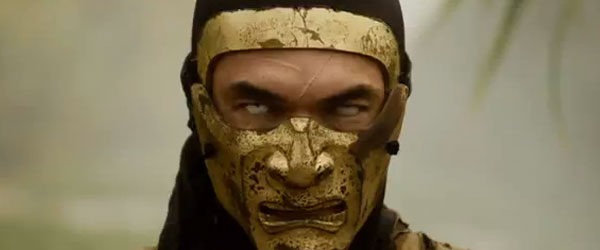
From your end, as the producer, where do you tend to put your resources? Is there a certain area of production that tends to get more than others?
Sloane: Not really. Our mission with all of our digital original content is to put every cent we have on the screen, so to really empower the director to do what they do best. That’s one of the beauties about being in this space is that we’re not held hostage to different criteria other than to make the best possible content we can make. As much action as we did on the screen, I think the biggest challenge in the digital space is on the special effects side of things. That’s the one area that the costs are the costs. We’ve been able to work with companies that have, I don’t want to say waived the cost, but give us drastic discounts because they want to experiment with us.
How about your shooting format? You’re airing these on YouTube and not necessarily showing them on a big screen, so does that give you more flexibility when choosing a camera?
Sloane: We’re using RED cameras. We experimented a lot with the Canon 5D early on, but we’re using the highest quality, latest technology equipment. And that’s a big part of our mandate too is just the way we’re capturing these shows. You can put it on 1080p or you can put it on a giant screen in a theater, but the primary window is the digital window and online. I think it’s pretty much our goal to just capture it on the highest level we possibly can.
How was it making the move from season one to two? Is there anything you did on the first that you stuck with or wanted to avoid this time around?
Sloane: There’s so much, but I think the main thing was for season two we have a linear story that has a beginning, middle, and end. Each episode in season one, we bounced around. It ended up tying together pretty well, but they were definitely ten standalone episodes. Two of them might have merged together, but this season it definitely is one linear piece that you can string together, you could watch all ten straight up, but that was the biggest difference from season one to season two.
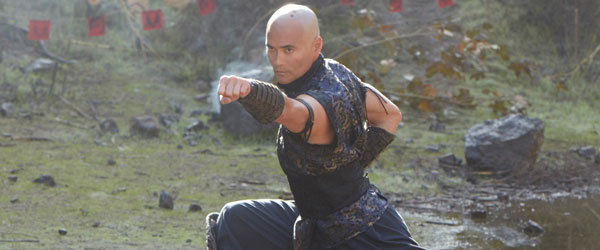
Is there any concern about the format change? I really took to the standalone, origin format. Are you confident fans of season one will respond positively?
Sloane: That’s a really good point. Definitely you can watch these as standalone pieces and you can actually reshuffle them and watch them not in order, too. That’s the other thing that’s really kind of fascinating, so it’s not like you have to watch them linearly, one through ten. It definitely tells a story and you get a cliffhanger at each episode, but definitely at the end, it leaves you wanting more. But you can watch it separately as well. It works really well that way, too.
I know the show went over really well, but is there any feedback you got from fans that made it into the second season?
Sloane: Yeah, definitely. I didn’t really key in on that. I know Kevin Tancharoen definitely listened to the fans pretty manically, I guess you could say. I’m not afraid to say it. He definitely took note of what things they didn’t like, what things they liked and tried to accommodate that. That was one of the things that I loved, that a studio can see instantly what people are thinking, what they’re saying. It’s almost addicting for traditional media people to just be able to instantly see comments and read about what people liked, and also read about what people didn’t like. I think that was one of the things that was so cool on season one was that our percentage of likes was higher than any other series, let alone the views that we had, which is a pretty good milestone. And it wasn’t just domestically. It was on a global level.
What’s your shooting schedule like? Do you shoot every single episode before the season starts airing?
Sloane: This time around we did. Season one, we were rolling episodes. We shot everything in one piece, but we were editing and putting on the special effects and piecing each episode together as we rolled out the episodes. So this season was pretty different in that we actually had everything in the can, finished, ready for delivery. But I think that’s a case-by-case basis – who’s distributing, when they need it, that kind of thing.
Do you think there’s any potential in using the immediate response as a tool of sorts, doing rolling episodes and taking viewer comments in account while you’re still making the show?
Sloane: [Laughs] I don’t know. That’s a great question. I figure it’d be interesting to try and do something like that where you could actually adjust while you’re in production. I surely liked this last go-around where we were able to capture everything, go into the editing room, and work on it and be able to deliver. The first time around, I don’t think we had the time to adjust for comments and that kind of thing, but we felt like we were on the right track while we were there. There were certain things that we would show people associated with the project and tweak it that way, and then also worked very closely with the game’s group and had their input as well.
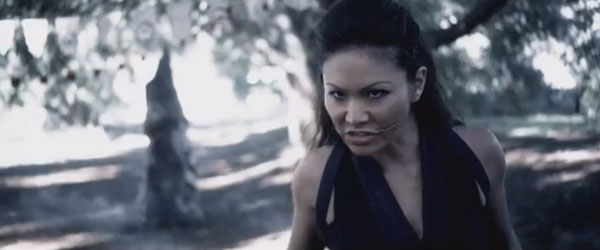
Is there anything you’re particularly proud of – perhaps a location you locked, prop you found, etc. – that we should keep an eye out for in the new season?
Sloane: Yeah, for sure. There are so many things. It was amazing to be able to shoot here in Los Angeles. The first one, we went up to Canada, and just being able to work here was great, to be able to work with the team we want to work with here in Los Angeles. We have a lot of cameos and a lot of talent involved. To have to travel to a location, it changes it up a little bit. And also I liked the ability to tell one story instead of bouncing around.
Why the wait between season one and two? Is there any specific reason for the two-year gap?
Sloane: No, not really. We were synching up with the videogame for season one and we didn’t have any idea of the success it was gonna have and the views it was gonna generate. We were in pre-production on two other digital projects when “Mortal Kombat” season one came to be, so we finished season one of “Mortal Kombat” and jumped right into our other series, “H+” and “Aim High.” It wasn’t like we specifically waited. I think we just realized, wow, the fans want more of this. Let’s see if there’s a way to put it together and if there’s a way to work with Machinima again to do that.
I know you probably don’t want to get ahead of yourself, but considering season one did so well, are you making any arrangements now so you’re ready if you get the opportunity to continue the show?
Sloane: I think in the back of our minds we’re always thinking, it would be great to do a season three or jump platforms. There’s been a movie that’s been in development with Kevin Tancharoen as the director, so I think we’re really wanting to see what comes next. We’ve had some discussions with Machinima about the next version of “Mortal Kombat,” but no, there’s no plans right now to do a third season. [Josh] Baizer and [Marshall] Johnson, who wrote season two, had written so much that we have enough for probably a third season, so I guess the good news is, if there is a demand for it, we’ve got the storyline that continues on. So we have those scripts. Those guys did an amazing job.
Are you involved in that “Mortal Kombat” feature, too?
Sloane: Yeah, we’ve been working on that. It’s been in development. No news there other than we’re still working on it.
Have you come up with a timetable at all? Or maybe even just a start date goal?
Sloane: Not really. I think we’re just waiting until we have the best materials, the best script, we’ve been working on artwork, and the look and the feel of it. But no, there’s no timeline that we have to hit right now.
“Mortal Kombat: Legacy II” debuts on Machinima on September 26, 2013.
